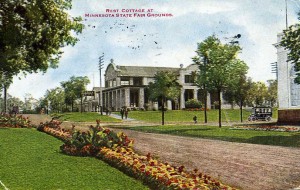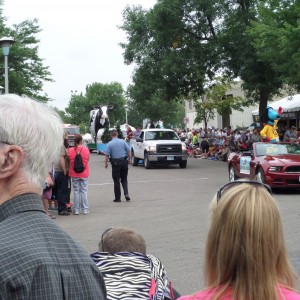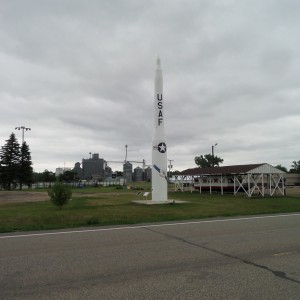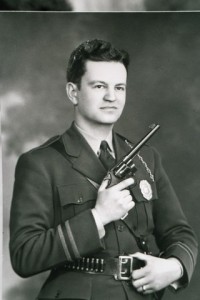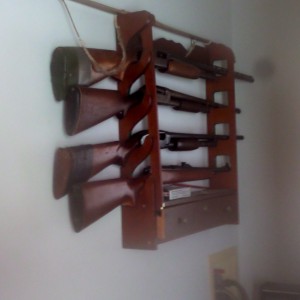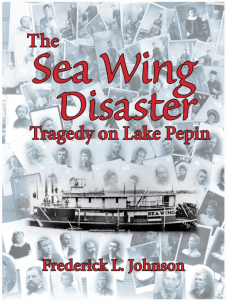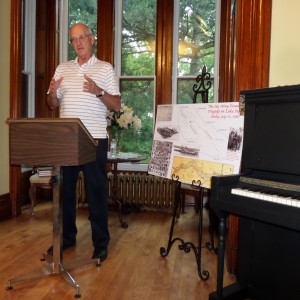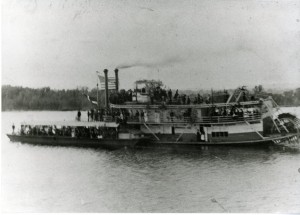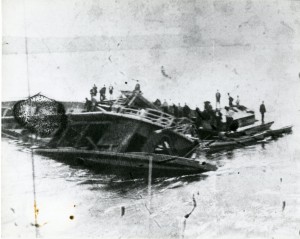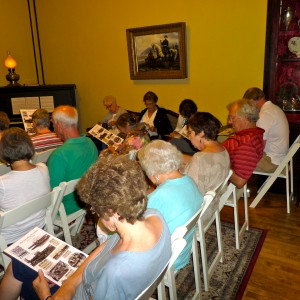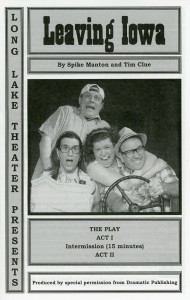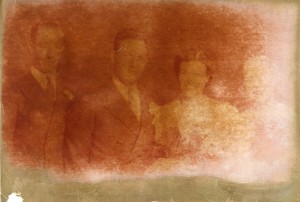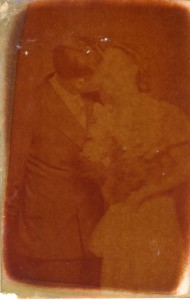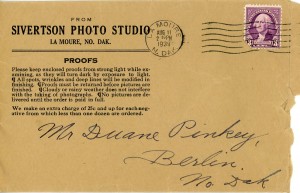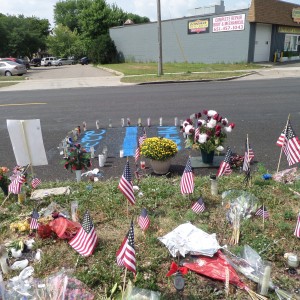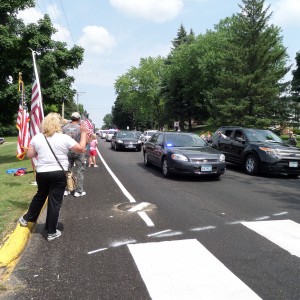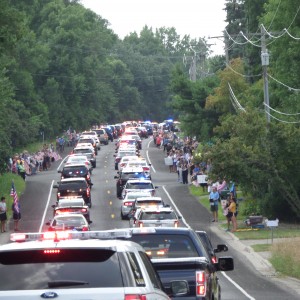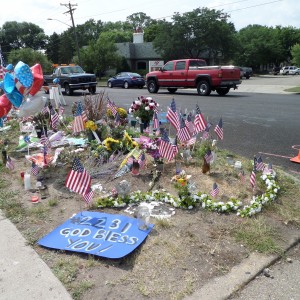My too-frequent trips out to North Dakota, with a side trip last Thursday and Friday to Bemidji, yield numerous ideas for blog posts, all kept on a list of possibilities for sometime.
Today, the first post after my return, current events in Ferguson MO interfere.
One week ago at this space I wrote about the outpouring of emotion about a policeman killed while making a routine traffic stop in a neighboring community. You can read it here.
This week the news has been dominated by a deadly incident in St. Louis suburb Ferguson MO, where a policeman shot and killed an unarmed teenager. There have been other recent incidents involving excessive violence by police. A long and excellent summary is here.
In last weeks post, at the end, I included a May 27, 2014, proposal by my friend, Grace Kelly, about recognizing positive policing policies. It seems a good time to remind readers of that proposal, and invite you to read and share the proposal, and help towards positive results in your community.
Best I recall, Ms Kelly’s sensitivity to gross over-policing dates back to the Republican National Convention in St. Paul in early September, 2008, when the police appeared armed and very dangerous to quell protests. Who can forget the gunboats in the Mississippi River at St. Paul, supposedly there to protect against river assaults by protestors? This was a very bad time in our town.

This and following from Greg and Sue Skog, at time of Peace Island Event described below Sep 2008.
There was a single garish reminder of that time in the funeral procession of hundreds of police vehicles last week: One of those monster anti-something vehicles came up the street along with the normal police cars.
It did not fit.
It stood out. Very negatively.
Grace was a leader in the successful campaign to replace the then-Ramsey County Sheriff with a much more positive Sheriff,
Matt Bostrom, in 2010. We see the difference every time there is an incident here. Tone is extremely important.
Like last weeks overwhelmingly positive tribute to police, this weeks overwhelmingly negative indictment of police overreach in Ferguson MO is a time to reflect, and Grace Kelly provides the opportunity to those who will look at her proposal. Please do.
Every single one of us can make a positive difference, where we live.
Comment
from Greg H, Aug 15:
A year ago or so I caught the testimony of a local police chief before a Congressional committee. In part, he chronicled the increase in fire power of the weapons issued to his patrol officers, in a small community.
The latest upgrade was to a weapon similar to that used in the Sandy Hook school shootings.
The police chief explained to the Congressional committee members that the reason for his community spending money to equip patrol officers with more lethal weapons was simply to prevent his officers from being out gunned by the bad people.
Just today we learned the suspect in the murder of the local police officer during a traffic stop had told a woman friend days earlier that he planned to kill a cop. He also told her he had been smoking meth for several days.
As to Ferguson, I prefer to wait for the facts of the confrontation between Mr. Brown and the officer before reaching any conclusions.
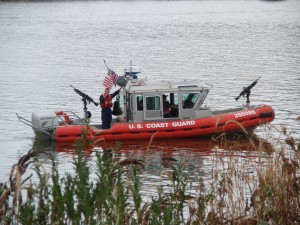
Early Sep 2008, Mississippi River, St Paul MN photo by Greg and Sue Skog
, in the aftermath of the heavily militarized security at the 2008 Republican National Convention in St. Paul MN. Personally, I walked in the major protest march (peacefully), but most of my time was in a major Peace Island Conference a group of us had organized which ran for the two days of the Convention, about three miles from the Republican Convention site. Our conference was so peaceful that even activist media didn’t cover us – the drama was down the street at the Xcel Center where the Republicans were meeting.
A GREAT END TO A LESS THAN STELLAR WEEK IN THE TWIN CITIES
This past Thursday, Sep 4, shortly after noon, I decided to deliver a large box of unused “Vote in Honor of a Veteran” buttons back to the Minnesota Secretary of State’s office, which is near the State Capitol Building (Watch for a future post on those buttons). When I arrived there, the youth protest gathering was commencing at the Capitol steps, and there were plenty of assorted kinds of police in evidence. But all was quiet.
I parked in front of the State Office Building, put on the warning flashers, got the large box out of the back seat, and began to walk up the front steps. A Minnesota State Trooper came out from behind a pillar, with his soft drink in hand, and I said I was going to the Secretary of State’s office. “Got a bomb in there?”, he said in an off-handed almost joking manner, and didn’t even venture a look inside the box (I guess I didn’t look like a terrorist), I went in, dropped off the box, and left. (Somebody could probably cite him for dereliction of duty, but for me he was the good face of the police this past week.) I decided not to stay for the demo, since I wanted to get over to the Peace Island Picnic, and legal places to park was an issue where I was, and it would have been a long walk to and from.
Driving my route to get to Harriet Island, I went down Chestnut Street, below the Xcel Center, and there were swarms of police preparing for the afternoon duty (today’s paper says there were apparently 3700 police in all, marshalled for the Republicans party in the twin cities – obscene overkill in my opinion.) Shepard Road was open, more police, and Jackson Street, and Kellogg to the Wabasha Bridge, and when I got to Harriet (now and forever more Peace) Island at 1 p.m. there was a great plenty of quality parking. There were few people in evidence, plenty of room to park, and a huge plenty of hotdogs, pork, cake, and on and on and on. It looked like it would be heaven for someone looking for a free meal (and it was). There was a box for contributions towards the event cost, and I hope they did well on collecting. (Coleen Rowley’s acknowledgements to all those who contributed their talent to Peace Island Picnic follow this text.)
Down on the river bank at Peace Island it was a chilly afternoon, overcast, breezy, maybe in the 60s. But it was about perfect for a gathering in many ways.
The Rowley’s were there, and, initially, perhaps 100 of us strolling around, and then the music gig began, first with Larry Long, no stranger to folks in these parts, joined by Pete Seeger’s grandson, Tao Rodriguez-Seeger, for a medley of songs beginning with Down by the Riverside, then This Land is Your Land, then Lonesome Valley, and on. The two musicians by themselves were phenomenal, the power for the speakers and instruments was solar (and stellar), and even in the overcast worked impeccably all afternoon.
The afternoon was off to a great start. In my initial planning for participation in the Picnic, I was going to stop by for awhile, go home, and come back later in the afternoon to help be part of the giant peace sign. But it was such a mellow place, this Peace Island, that I decided to stay the day.
I went back to the car to get my outdoor canvas chair, and settled in by the flagpole to the 9-11 victims, just to the musicians left, and with a clear view of the river. I was ready to settle in for one of the most relaxed afternoons I’ve ever had.
There could not have been a more peaceful place than Peace Island this day. The crowd grew, but slowly.
Tuesday’s Robot, a really good local group, followed Larry and Tao, and they were to be followed by a continuous succession of musicians all afternoon; there was some great jam session music going on as the afternoon progressed. I counted up to 15 musicians together at one point in the afternoon.
There were some bizarre twists, to be sure.
Patrolling the river just beyond the musicians was a gun boat – I kid you not – a Coast Guard vessel with mounted machine guns fore and aft. It appeared to be protecting the tour boat Johnathan Padelford as it carried passengers, probably delegates to the RNC, up and down the Mighty Mississippi. It was so bizarre as to be funny. (It’s in the slide show I previously sent.) I guess you never know what “tear-wrists” are going to be gunnin’ up or down the river to take out whomever…maybe that’s why George and Dick didn’t show in the twin cities.
At one early point, four SUVs ominously drove down a sidewalk in our area, all full of police, one with the back door open, as if they were preparing to raid our small assemblage, but they just slowly moved on.
To our west, a bunch of the police gathered, apparently for their souvenir photo, with, it seemed, the downtown St. Paul Skyline probably behind them. The gunboat arrived, apparently to be part of this photo op of “what I did on my vacation”.
Around 6 or so we all assembled into a giant peace sign. I’ve seen the photograph of all of us in this peace sign, and I’m sure that in a short time it will be published on Huffington Post or maybe even here on P&J. It was a very clear shot. I could even make out myself, on the back portion of the circle, a few folks to the right of the upright portion of the peace sign.
Together, Peace Island Conference and Peace Island Picnic turned out to be phenomenal and totally peaceful events. Together, they merited only the tiniest bit of news coverage – Peace Island Conference with 350 registrants none at all; Peace Island Picnic with about 1000 meriting only a few dismissive and inaccurate comments in the Pioneer Press On-line edition, bad enough so that a correction was apparently printed this morning in the print edition of the paper.
The message is “if it bleeds, it leads”. The anarchists, hated as they are by so-called ‘civil society’, were essential to the police state mentality that became St. Paul and Minneapolis this past week. Those anarchists should get thank you notes from the Republican Party, and the powers-that-be in our town. Without them, there wouldn’t have been any news. And while they’re writing thank you notes, maybe the likely abundant agents provacateurs should be on the thank you list as well. One of the persons on the march who was doing lots of photography, was quite certain she saw one person who had been egging on the Iraq Vets Against the War during the Labor Day protest march, breaking a window later in the downtown area – if so, he was probably arrested, and quietly released….
For us, the mantra for each of us has to become “I am the Media”. It is of absolutely no value to kvetch about what they aren’t doing. We have to become, as Gandhi said, ‘the change we wish to see in the world’. There is no alternative.
Let Peace Island become a continuing part of our conversation for sanity in our country and world.
From Coleen Rowley, Sep 6, 2008:
Wow!! Really good, Mr. Bernard! I’d like to forward the photos to my list too. I’m going to copy Mr. McGovern, Ann Wright, Tao, Larry Long, Sara Thomsen and Emma’s Revolution also as they figure in a few of your pictures.
If only there’d been a little more sunlight for the picnic. I think the cold weather was perhaps as much of a deterrent as the RNC bridge closings/traffic problems and the police intimidation.
With just a couple of “no-shows”, most of the info about musicians on our
website turned out correct. Neither Clyde Bellecourt nor Dorene Gray made it for the opening water ceremony. And Mitch Walking Elk didn’t make it either. But I think everyone else listed did. The solar panel trailer was from
Minnesota Renewables. David Boyce is the contact and as a power source, it worked absolutely great. The sound system was run by Doug Lohman of the Armadillo Sound Co. and it also got big compliments. (David Rovics had sung at the “March on the RNC” which didn’t have a good sound system and he said Doug’s was top notch. Doug used to do the sound for years at St. Joans.) The great grilled pork was made by Brian Huseby and his brother on their unbelievably large but portable grill. They grilled about 275 pounds of pork roast and 1200 hotdogs and almost all was eaten. (We did have a lot of buns left tho’.) We got free barbeque sauce from the Ken Davis company; donated French bread from New French Bakery; baked vegetarian beans at cost from Java Live in Faribault and also donated fruit from Co-op Warehouse and coffee from Equal Exchange.
We just had a great committee who did this all—not a lot of meetings—I think the grand total was only six—but we divvied up tasks well according to each person’s unique expertise.
Guess what? Tao already committed to coming back if, God forbid, St. Paul should ever host another RNC and we need to try and return to good neighborliness and sanity. Coleen R.

